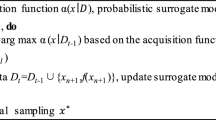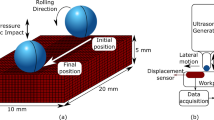Abstract
This paper develops a forward model and inverse model for the adaptive network fuzzy inference system (ANFIS) to the prediction in the sheet bore-expanding process. After using the dynamic finite element method to establish the basic database under various working conditions, an efficient rule database and optimal distribution of membership function will be constructed from the hybrid-learning algorithm of ANFIS. As a verification of this system, the deformed circle hole diameter D is compared between ANFIS, FEM, and experimental results. In the forward model, it is proved that ANFIS can efficiently predict the deformed circle hole diameter D successfully from the database constructed by punch radius RP, die radius RD, and initial circle hole diameter D0. In the inverse model, the initial circle hole diameter D0 is predicted to obtain a desired target deformed circle hole diameter D after forming. From this forward and inverse investigation, the ANFIS is proved to supply a useful optimal soft computing approach in the forming category .
Similar content being viewed by others
References
Lin JC, Tai CC (1999) The application of neural networks in the prediction of sprint-back in an l-shaped bend. Int J Adv Manuf Technol 15:163–170
Kim DH, Kim DJ, Kim BM (1999) The application of neural networks and statistical methods to process design in metal forming processes. Int J Adv Manuf Technol 15:886–894
Wu CY, Hsu YC (2002) Optimal shape design of an extrusion die using polynomial networks and genetic algorithms. Int J Adv Manuf Technol 19:79–87
Jang JSR (1993) ANFIS: Adaptive-network-based fuzzy inference system. IEEE Trans Syst Man Cybern 23(3):665–685
Joun MS, Hwang SM (1993) Optimal process design in steady-state metal forming by finite element method I: theoretical considerations. Int J Mach Tools Manuf 33(1):51–61
Joun MS, Hwang SM (1993) Optimal process design in steady-state metal forming by finite element method II: application to die profile design in extrusion. Int J Mach Tools Manuf 33(1):63–70
Zhao X, Zhao G, Wang G, Wang T (2002) Preform die shape for uniformity of deformation in forging based on preform sensitivity analysis. J Mater Process Technol 128:25–32
Yamada Y, Koide M (1968) Analysis of the bore-expanding test by the incremental theory of plasticity. Int J Mech Sci 10:1–14
Takuda H, Tanaka Y, Hatta N (1998) Finite element analysis of forming limit in bore expanding of aluminum alloy sheets. Arch Appl Mech 68:566–576
ANSYS, Inc. (1998) ANSYS/LS-DYNA Theoretical Manual. ANSYS Inc., Canonsburg, PA
Takagi T, Sugeno M (1983) Derivation of fuzzy control rules from human operator’s control action. Proceedings of the IFAC Symposium on Fuzzy Information, Knowledge Representation and Decision Analysis, July 1983, pp 55–60
Author information
Authors and Affiliations
Corresponding author
Rights and permissions
About this article
Cite this article
Lu, YH., Yeh, FH., Li, CL. et al. Study of using ANFIS to the prediction in the bore-expanding process. Int J Adv Manuf Technol 26, 544–551 (2005). https://doi.org/10.1007/s00170-003-2024-0
Received:
Accepted:
Published:
Issue Date:
DOI: https://doi.org/10.1007/s00170-003-2024-0




